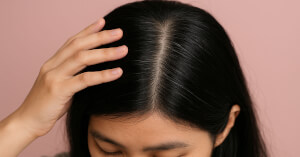
PABA Supplement Information and Usage Guide
PABA is a compound related to folate, once considered vitamin B10, used for skin, hair, and pigmentation support.
PABA (para-aminobenzoic acid) is an organic compound that was once considered part of the B-complex group, sometimes referred to as vitamin B10, though it is no longer classified as an essential vitamin for humans.
It plays a role in bacterial synthesis of folic acid and has been used in dermatology and cosmetic applications due to its effects on pigmentation and UV absorption. While the body does not require PABA as a vitamin, it may provide certain skin and hair-related benefits when taken as a supplement.
PABA is also studied for its potential antioxidant properties and its use in managing specific skin conditions, though scientific evidence remains limited.
Other names & forms of PABA supplement : PABA, Para-Aminobenzoic Acid, para-aminobenzoate, vitamin B10, B10
Benefits
PABA has been explored for various cosmetic and dermatological effects, particularly due to its influence on pigmentation and antioxidant properties. Though research is limited, some users report notable improvements in skin and hair health.
- May support skin health and improve conditions like lichen sclerosus or scleroderma.
- Historically used to restore hair pigmentation and support hair growth.
- Provides antioxidant support and may help protect tissues from oxidative stress.
- Potential adjunct treatment in autoimmune skin disorders, though clinical data are limited.
Dosage
PABA supplement is typically taken in doses depending on individual needs and health goals:
Typical supplemental doses range from 100 mg to 1,000 mg per day. Higher therapeutic doses (up to 12 g/day) have been used under clinical supervision for rare conditions, but such usage requires medical oversight.
PABA dosage should be tailored by a healthcare professional to your condition.Side Effects
PABA is generally well-tolerated at low doses, but higher intakes have been associated with side effects such as nausea, vomiting, skin rashes, and in rare cases, liver toxicity.
Some individuals may experience allergic reactions, especially when PABA is applied topically.
Interactions
PABA may interfere with sulfonamide antibiotics, reducing their effectiveness. It can also interact with medications affecting folate metabolism, such as methotrexate.
Combining with Folic Acid may support synergistic effects in some cases.
Precautions
Individuals with liver conditions or known sensitivity to PABA should avoid supplementation. Due to its metabolic interactions, PABA should be used cautiously alongside medications that affect folate pathways or photosensitivity.
Studies
These studies provide scientific insights into PABA benefits:
An early 1960s clinical report documented improvements in scleroderma symptoms with high-dose PABA therapy.
More recent case reports have explored its use in treating lichen sclerosus, though randomized controlled trials are lacking. Further research is needed to establish efficacy and safety at higher doses.
This article was originally published on Stackbb.com, your trusted source for science-based supplement guides.
Related Articles

Important Disclaimer: The information provided on this page about PABA supplement is for informational purposes only and has not been reviewed or validated by a medical professional. It is not intended to substitute professional medical advice, diagnosis, or treatment. Always consult your doctor or qualified healthcare provider before starting, stopping, or changing any supplement or part of your healthcare regimen. Individual needs and responses to supplements may vary, and what works for one person may not be appropriate for another.


